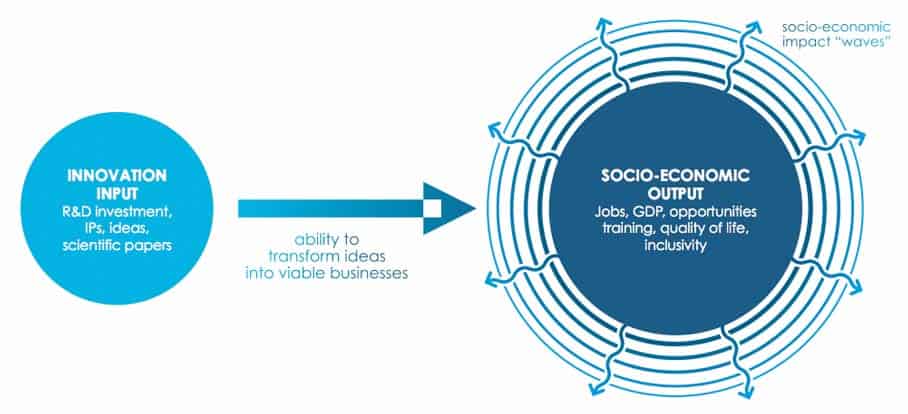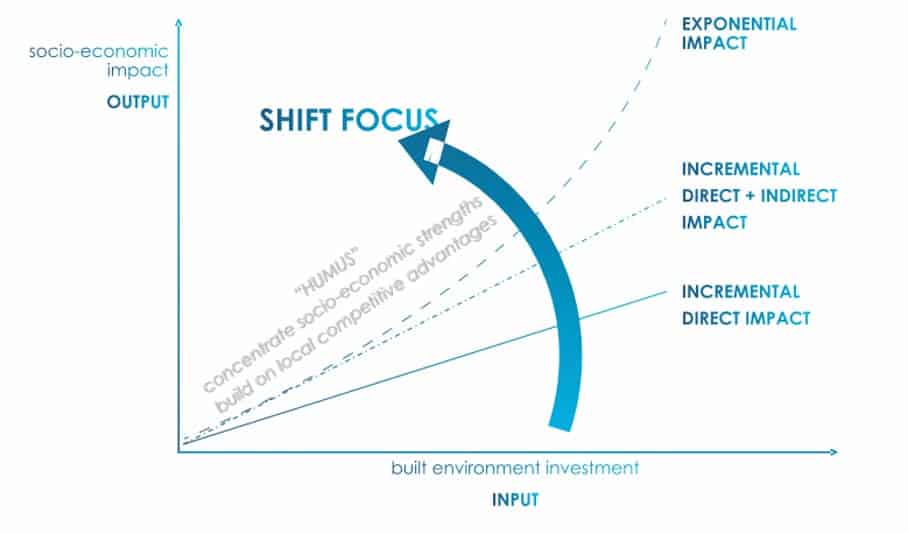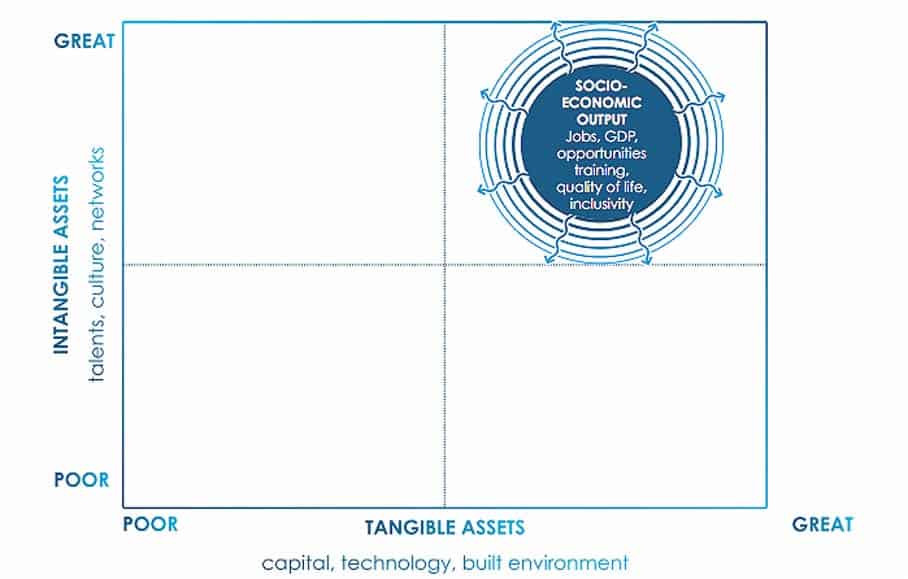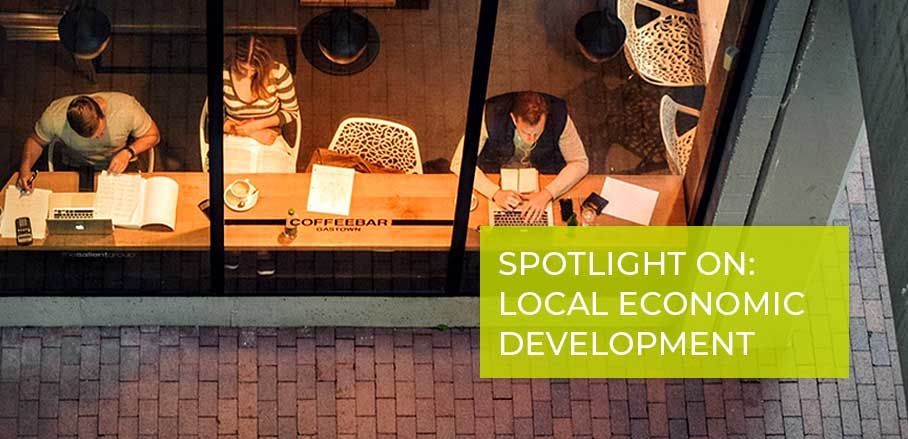Promoting Sustainable Urban Development Through Impact Innovation
Human-centred impact innovation can be an extraordinary source of social and economic growth for cities and metropolitan areas in developing regions that drives growth of urban communities, supporting equitable and sustainable development and inclusive prosperity.
It takes more than ideas and capital to transform innovation into tangible socio-economic output
“Impact Innovation” refers to innovation that purposely seeks to generate sustainable and measurable positive social and economic impacts. Coming up with great ideas, or even radically forward-thinking inventions, is not enough. To generate tangible socio-economic “output” in terms of new opportunities for citizens, affordability, inclusivity and quality of life, ideas (the innovation input) must be transformed into viable economic activities.
The creation of innovation-friendly communities where ideas are successfully transformed into social and economic benefits can be a strong option for revitalising urban areas and reducing social inequalities. Under favourable conditions, its powerful effects can propagate like “impact waves” and travel across communities and social relationships.

So, how can we bring more innovation and entrepreneurial spirit into our communities? What are the factors that influence the ability to be innovative and entrepreneurial? If these factors are not in place, is it possible to create them?
Cities can offer a fertile ground for impact innovation but need to shift focus
Today’s most powerful innovation originates from collaboration, sharing of ideas, mashing up of radically different disciplines and technologies to create new solutions to new problems or to progress traditional industries. Effective multi-disciplinary, open collaboration requires intellectual density (concentration of skilled actors), diversity, tight proximity, strong networks and partnerships among citizens, businesses, laboratories, academic institutions and investors.

Physical proximity and density of these key actors can be created in urban environments. However, creating an entrepreneurial spirit also demands some social, cultural and behavioural aspects of crucial importance. It requires a gradual shift-of-focus from built-environment investment to socio-economic output. Rather than primarily pursuing unrealistic growth targets through major capital-intensive projects, cities in developing regions should recognise their distinct DNA and concentrate on their strengths to address priorities such as affordable housing, accessibility of public services and education. Capitalising on their local resources, focusing on attributes such as local culture, heritage and unique advantages, cities can create a resilient, long-term positive “exponential impact”, which also incorporates the social and economic returns generated by the creation of an entrepreneurial culture.
With the right mind-set, necessity and lack of resources in some developing regions can be the driving force to generate inventiveness. Deliberately investing in human capital, cities can craft transformative initiatives in which social progress is the main desired outcome and built environment is one of the ingredients needed to achieve it.
Understanding the ″soft″ and ″hard″ ingredients that drive entrepreneurship and inventiveness
I recognise that I do not have all the answers, but I am aware that the creation of a successful innovation-friendly community requires mastering the “art” of crafting, nurturing, leveraging and combining great tangible and intangible assets.
Tangible assets include the physical infrastructure in terms of the built-environment and technology and the capital that is needed to create and maintain it over time:
- capital is needed to create facilities and technologies able to support innovation and also fund start-ups, finance cross-sector projects, mentor and grow local talents. Ideally, some commitment of public-sector funding would increase credibility and help attract private funds;
- technologies should be adaptable, accessible and shared to make it affordable for micro businesses and individual entrepreneurs to use what otherwise would be cost-prohibitive facilities;
- the built environment should be dense and permeable to facilitate collaborations, interactions and accidental collisions among the various actors, and affordable to avoid gentrification and exclusions.
For example, some cities have successfully transformed low-cost, under-utilised urban areas into authentic places, offering a mix of functions including collaborative workspaces, labs, technological facilities and high-quality amenities, which have emerged as vibrant centres for innovation.
Intangible assets comprise local and global talents, an authentic innovation culture deeply rooted in the community that supports entrepreneurship and strong collaborative networks among key actors:
- high intellectual density should be mainly pursued “organically” by supporting local people, unleashing their potential through training, on-going mentoring, and by creating opportunities and experiences. Support should be offered not only to innovative ventures started up by skilled entrepreneurs, but also to traditional businesses operated by local people, thereby contributing to the creation of an inclusive community and preventing rise in income inequality and social segregation;
- impact innovation requires a mission-oriented approach, openness, participation and a culture that supports entrepreneurship, accepts failures and learns from mistakes. Building a resilient and sustainable community requires people that share the same authentic purpose that makes every day meaningful and people that feel they are creating something valuable for their community;
- social and economic networks are instrumental for collaborating and practicing open innovation but also for increasing social cohesiveness and inclusiveness of the community.
For instance, some city leaders and institutions have successfully created a supportive regulatory environment and collaborative entrepreneurial culture deliberately engaging the broader community and investing in education to cultivate talents for future job opportunities.

Impact innovation requires a strong vision, a coherent unitary plan and collaborative governance
Embracing impact innovation is one of the strategies some cities and towns in emerging regions might take into consideration to stimulate growth, revitalise distressed communities and alleviate poverty. Transforming ideas into innovation and innovation into social and economic benefits requires a strong authentic vision and the ability to create a well-balanced ecosystem that generates broad-based prosperity.
Whilst tangible assets are relatively quick and easy to construct or modernise, building intangible assets requires a long-term commitment to create the right mind-set of a community. The real challenge here is to generate those fundamental conditions for breeding and growing local champions, which means investing in education at all levels, promoting real-life networking and multi-disciplinary initiatives, teaching locals how to manage companies and market products. This vision and its implementation require careful intervention, coherent unitary strategy and a long-term thinking governance that pursues alignment and convergence of interests of all stakeholders in the community.
- Promoting Sustainable Urban Development Through Impact Innovation - 10. January 2019
- What Characterises an Ideal City, and How Do We Get There? - 22. June 2017
